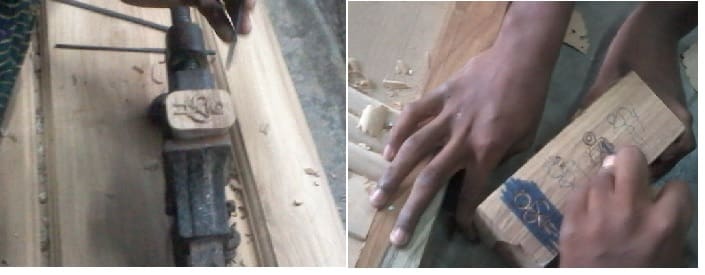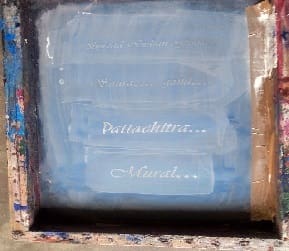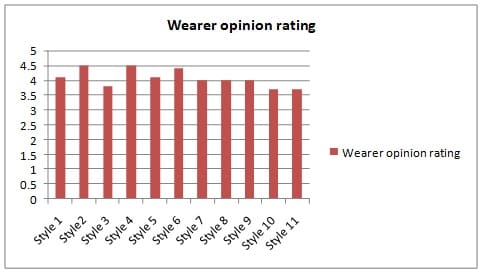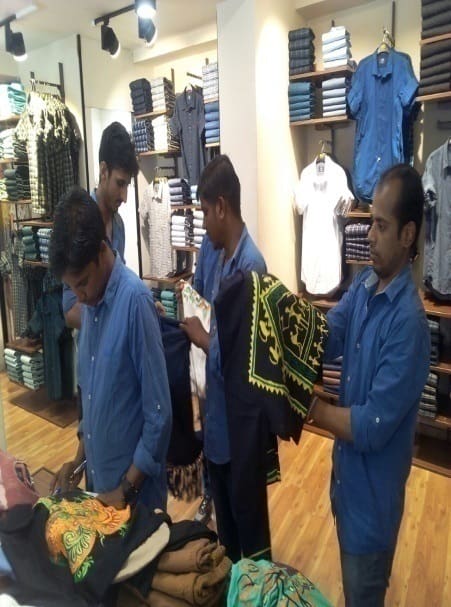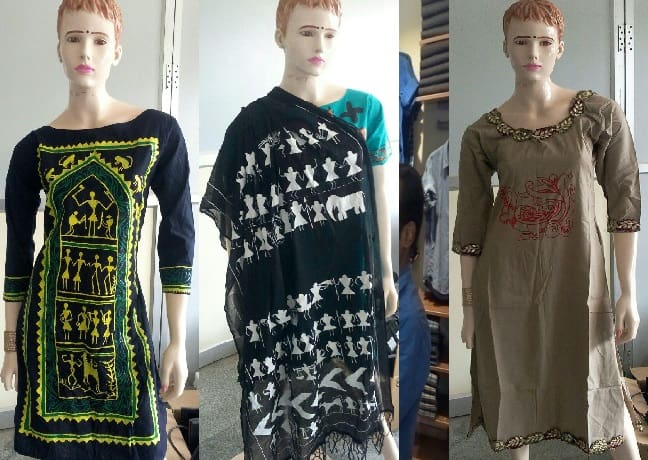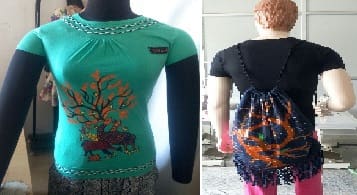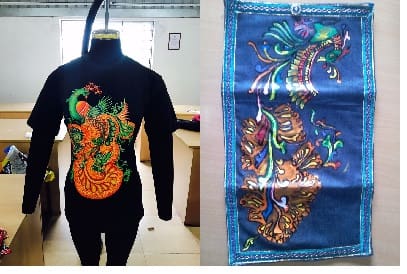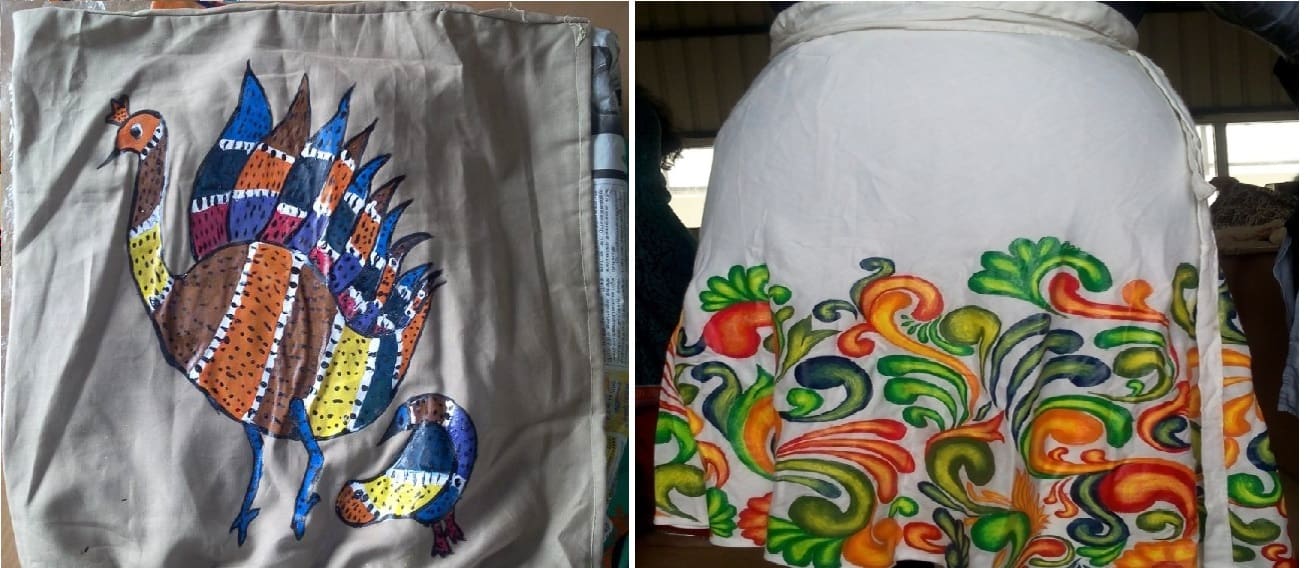A.N.Sai Krishnan* and V.Chandrasekaran
Department of Apparel Technology, PSG Polytechnic College, Coimbatore 641 004, India
Abstract
Product development in fashion segment is very challenging for the designers to innovate trends and styles regularly , since consumer are primarily looking for new look in purchasing of the fashion products. As India is marked by its rich traditional heritage of tribal folk arts and culture generated by the tribal and rural people of India, The folk art and craft is also have continued to show case their creative brilliance in various products. Presently the art and craft in textiles like warli, madhubani, and aari is gaining much popular among the wearer. Keeping the importance of art and craft in this work we have made an attempt to inspire the old crafts and painting and craft like saura, patachithra, gond and mural painting . The inspired designs are incorporated in the selective location in woven and knitted apparels by block, screen and hand paintings. Innovative products is also undergone series of subjective evaluation from the wearer’s perspective and reported. The report shows good rating scale from the subjects,the evaluation of rating scale from the apparel retailer feedback and their perspective shows good value addition from the innovative product developed from the inspired folk art designs.
*To whom all the correspondence should be addressed.
E-mail: [email protected]
- Introduction
Indian painting are the so-called “folk” paintings dating back to a period that may be referred to as “timeless”. These are living traditions, intrinsically linked with the regional historic-cultural settings from which they arise. It has an age-old heritage that can be traced back to the beginning of civilization on this subcontinent. It began with cave paintings, with the natural dyes so strong that they can still be seen today on the walls of the caves after centuries. The folk and tribal painting comes from the remote rural and tribal regions, sometimes the artists of these rustic works are not even educated. They lack the basic means to attend schools, and as they are gifted with such beautiful mean of expression by nature. The various painting forms coming from these regions began not just as a painting but also as a religious and social ritual performed daily. It began with painting the walls and floor of mud houses. They hide the belief that this purified the ambience and pleased the deities. Various religious and symbols were therefore seen within the painting.The term ‘folk paintings’ here encompasses pictures made in Indian villages by both men and women, for ornamentation of their abodes, portrayals of their gods and for their various rituals; and, by local professional painters or artisans for use of the local people. All these paintings were produced in a variety of styles and themes. History, sociology and geography infused the painting of each region with local flavor. Their style and quality depended on the materials available in the place in which they were executed, these very factors that helps to identify the region. Folk art may be defined as the art created among groups that exist within the framework of existing society, but, for geographical and cultural reasons, are largely separated from the sophisticated and cultural reasons, and the developments of their time. As a result, they produce distinctive styles and objects for local needs and tastes .The common stylistic characters in folk-art are preference for simple outline and choice of typically representational lines; a simplification of colors and volumes so that shading is eliminated; Stylization of motifs to create decorative elements; and repetition of lines, of entire figures, of dots for intensive or rhythmical purpose .Since innovation plays a critical important in the apparel and fashion product development , an attempt have been made in developing innovative fashion products by inspiring and implementing the Indian folk art designs in the garment in order to bring awareness and importance of Indian folk art by garment designing.. These designs are incorporated in the form of block printing, hand painting and screen printing. The opinion about the new product developed is carried out by subjective evaluation from the wear’s perspective and retailers.
- Indian folk arts
2.1 Saura
Saura painting are from the Saura tribes who lives in Orissa. Saura tribe is one of the oldest known communities in India. These paintings are found on the mud walls of their houses. The painting usually depict the daily activities in the life of the saura’s .The Saura’s depiction of the human form is similar to that of the warli’s and hence at times, Saura painting are mistaken as Warli paintings. However the two styles of painting differs distinctly in their use of colors, background, and other details.
2.2 Gond
Gond art is characterized by the sense of belonging with the nature, it is popularly practiced much by tribal people of madhya pradesh . This painting created in this art are bold, vibrantly colored paintings, depicting mainly flora and fauna. The colors from the char coal, cow dung, leaves, and colored soil. If we look very closely the craft design is made up of dots and lines.
2.3 Patachitra
Patachitra painting can be traced back to the 12th century AD it is one of the earliest form of painting practiced by tribal people of orissa , it is one of the most treasured art in india, Artist followed stylized traditional forms to creates figures of mens, womens, fauna in depictions of mythological tales.. Although several centuries old, patachitra continues to be a living art form practiced even today.
2.4 Mural
The roots of the extant mural tradition of kerala could be traced as far back as the seventh and eighth century A.D. It is not unlikely that the early kerala murals along with its architecture came heavily under the influence of Pallava art. The oldest murals in Kerala were discovered in the rock-cut cave temple of Thirunandikkara, which is now in the Kanyakumari District of Tamil Nadu. The hall of the cave must have once been richly decorated with paintings. However at present only sketchy outlines have survived the passage of years.
3.Fashion Product development methods
In this work we have taken a survey in leading apparel retail show rooms to find any value addition has given for the garment by Indian folk art designs . The survey is carried out in five leading apparel retailer showrooms by examine at least ten garments sample and found out any traditional Indian folk art designs is implemented in the garment.
As per our survey the percentage of availability of Indian folk art designs in retail showrooms are very few as the percentage is coming in an average of 17.4%, we have decided to incorporate the Indian folk art designs in garments by machine and hand embroidery, hand painting, screen and block printing . The details of designs used and design development method are mentioned in the table 1. Totally we have constructed eleven garments by using woven and knitted fabrics . In each garment we have applied the folk art designs. Subjective evaluation form the wearers perceptive is also carried by rating scale asf
1- Poor, 2 – Average, 3-Good, 4-Very Good, 5-Excellent)
3.1 Method of applying the design in the fabrics and garments
- Block printing : For the block printing rectangular teak wood blocks were taken and the designs are first printed on the paper and stuck on the block on the teakwood piece. With the help of steel chisels of different width, carving of the wood takes place based on the design specification , the fig 1 and 2 shows the wooden block development. After developing the wooden blocks , the designs are implemented in the garment by dipping the block in the acrylic paint for printing.
- Hand painting : For the hand painting acrylic paints are used for painting two to three coats are given, after the completion of painting the garment is allowed to dry for 24 hours and it is pressed in the reverse side, If the pressing is not carried out the paint will drain off within a wash.
- Screen printing : Screen is developed with VINER HAND ITC font style and in the font size of 36 as shown in Fig 3.After finishing the development of screens, it is placed above the garment . It is better to place another fabric or paper under the selected location to avoid the dye smudge. After the screen printing, garments were allowed for drying for more than a hour, garment is also pressed in the reverse side.
3.2 Method of implementation of the folk art in garments
Table 1 Method of implementation of folk art design
Figure 1 ad 2 Wooden Block development
Figure 3 Screen development
4. Innovative folk art Apparel products and Opinion from the wearer perspective
The eleven garments were shown to wearer to express their opinion about the folk art design .The customer are preferred novel design of saura and mural art where the scale rating is very good to excellent, the wearer opinion rating is mentioned in the fig 4. In general for other garment styles rating scale falls under good , the innovative concept of folk art design and changing the elements of design enhance the aesthetic appearance of the garments.
The apparel retailer is also critically examine all the products as shown in the fig 5.the retailer expressed positive feedback and overwhelming response in selling of the newly innovated and value added fashion product.
Fig 4. Wearers opinion rating scale for different styles
Fig 5. Apparel retailer examining the product
Fashion Product development
Saura- Kurta (Women’s wear) Saura- Stole(Women’s wear) Mural- Kurta(Women’s wear)
Gond-T Shirt ( Hand painting) Gond- Swing Bag (Hand painting)
Mural-T Shirt Women’s wear (Hand painting) Mural- Purse
Gond- Pillow cover ( Hand painting) Mural- Wrap over skirt ( Hand painting)
Patachitra-Kurta Women’s wear Gond- Kurta Machine embroidery ( Men’s wear)
CONCLUSION
We have successfully developed eleven innovative fashion products by inspiring the Indian folk arts. The products developed were taken for opinion from the customer by conducting the subjective assessment. The subjective rating of eleven products falls in the scale rating of good to excellent for all the products. The is a overwhelming and good response from the retailer perspective, the retailer is also suggested that to concentrate more on accuracy of the hand painting. As the cost of developing product is quiet less, designers and new product apparel product developers will have the huge space in the market for the development of folk art inspired product . Presently consumer preference is focusing more on the amalgamation of ethnic and modern design outfit .New innovative folk art products will have good and wider scope in the niche market segment of fashion product development and apparel retail space.
References cited
- Shailaga D. Naik, “Traditional embroidery of India”, A.P.H Publishing corporate, 2012.
- Elaine stone, “The dynamic of fashion”, Fairchild published, 2004.
- Saimen John “Traditional knowledge of folk crafts in Tamil Nadu”, Indian Journal of Traditional knowledge. Vol 9(3), July 2010, pp 443-447.
- Sivapriya Sekar, “A study on selected folk art forms respects to Indian fashion”, International journal of interdisciplinary research and innovations, Vol 2, issue 3, pp (73-78), July 2014.
- P. Patel, “The Saura and the panoramic painting”, Orissa the review, Jan 2005.
- “Evaluation study of tribal and folk arts and culture in West Bengal”, Orissa, Jharkhand, Chatiskar and Bihar.
- Hari Chauhan, “Wood carving from Pabbar valley”, Indian journal of traditional knowledge. Vol 4(4), Oct 2005, pp 380-385.
- Sajnani Manohar, “Encyclopedia of Tourism Resources in India”, Vol 2, (2001).
- Jaya Jaitly,” Crafts atlas of India”,Niyogi Books, 2012.
- myindianculture.com
- indianfolkarts.com
- archive.india.gov.in
- ignca.gov.in
Acknowledgement
The authors acknowledge the support given by the Management, the Principal and Head of the Department of Apparel Technology, PSG Polytechnic College for their encouragement and support in completion of this work. Also we thank our students of Apparel Technology M. Dharin, S. Karthik and R. Pavithra devi who contributed for this work.


